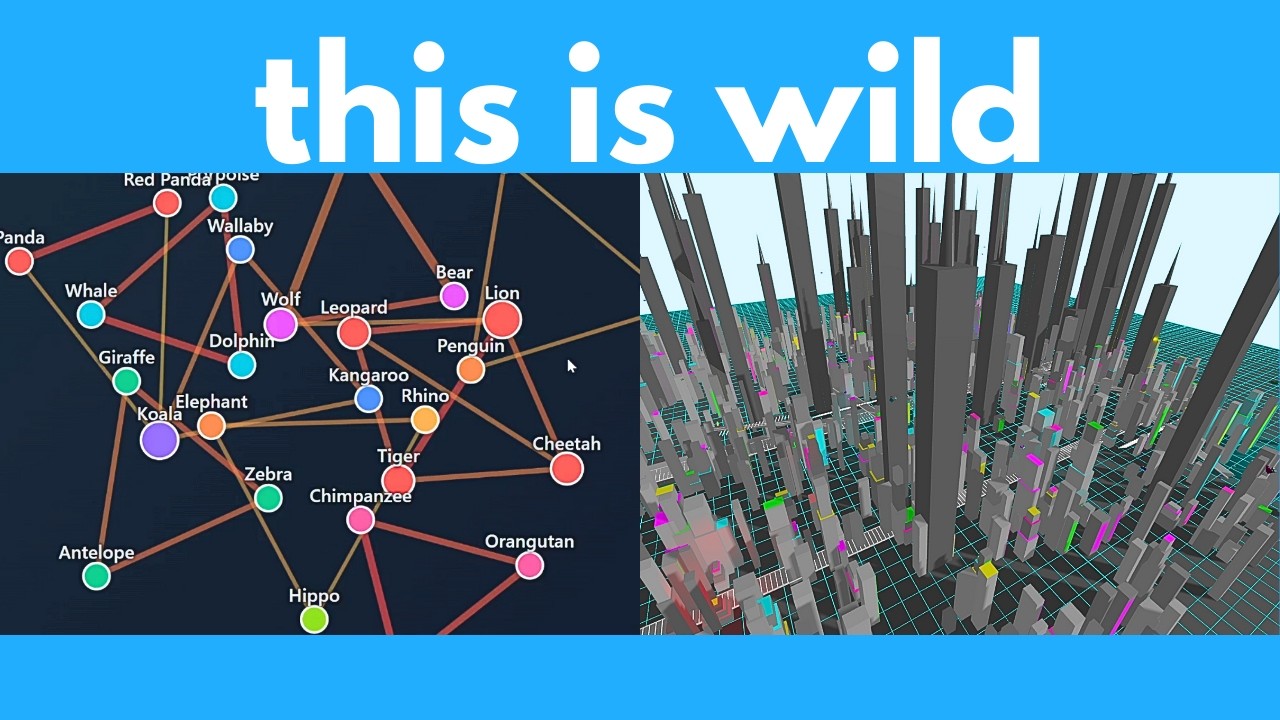The video highlights Claude 3.7, Anthropic’s latest AI model, showcasing its advanced capabilities in creating interactive infographics, simulations, and solving complex STEM-related problems, while also noting its hybrid reasoning skills. Despite its strengths, the presenter points out limitations such as the inability to generate images or access real-time information, and compares its performance with other AI models, emphasizing that it may not be the best choice for every task.
The video discusses the capabilities and features of Claude 3.7, the latest AI model from Anthropic, highlighting its advanced functionalities and performance compared to other AI models. The presenter showcases various applications of Claude 3.7, including creating interactive infographics, simulations, and coding tasks. The model’s ability to generate complex visualizations, such as a 3D futuristic city and an interactive periodic table, is emphasized, demonstrating its strength in STEM-related tasks. The presenter also notes the model’s hybrid reasoning capabilities, which enhance its problem-solving skills, particularly in science, math, and coding.
The video explains how users can access Claude 3.7 through various platforms, including its own site and third-party applications that do not require a phone number for account creation. The presenter highlights the model’s extended thinking feature, which allows for deeper analysis and reasoning, making it particularly effective for complex tasks. Examples of its capabilities include generating interactive graphs from data tables and creating simulations of ant colonies and Monte Carlo methods for estimating pi. The ease of use and the quality of the outputs are praised throughout the demonstration.
In addition to coding and data visualization, the video explores Claude 3.7’s performance in medical diagnostics and physics problem-solving. The presenter tests the model’s reasoning abilities by posing a medical case and a complex physics question, showcasing its analytical skills and the clarity of its explanations. While Claude 3.7 performs well in these areas, the presenter notes that it has limitations, such as being unable to generate images or search the web for up-to-date information, which could hinder its effectiveness in certain contexts.
The video also compares Claude 3.7’s performance with other AI models, including OpenAI’s GPT-3.5 and DeepSeek. The presenter shares benchmark results, indicating that Claude 3.7 excels in coding tasks but may lag behind in other areas like visual reasoning and general knowledge. The mixed results from independent evaluations suggest that while Claude 3.7 is a strong contender in the AI landscape, it may not be the best option for every use case, particularly for simple tasks where other models perform equally well.
In conclusion, the video presents Claude 3.7 as a powerful AI tool with impressive capabilities, particularly in STEM applications and complex problem-solving. However, the presenter cautions viewers about its limitations and the rapidly evolving nature of AI technology, suggesting that newer models may soon surpass its capabilities. The video encourages viewers to explore Claude 3.7 and share their experiences while also inviting them to stay updated on the latest developments in AI through the presenter’s newsletter and future content.
